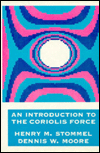5
1
9780231066365


An Introduction to the Coriolis Force available in Hardcover

An Introduction to the Coriolis Force
- ISBN-10:
- 0231066368
- ISBN-13:
- 9780231066365
- Pub. Date:
- 11/03/1989
- Publisher:
- Columbia University Press
- ISBN-10:
- 0231066368
- ISBN-13:
- 9780231066365
- Pub. Date:
- 11/03/1989
- Publisher:
- Columbia University Press
130.0
In Stock

Product Details
| ISBN-13: | 9780231066365 |
|---|---|
| Publisher: | Columbia University Press |
| Publication date: | 11/03/1989 |
| Pages: | 297 |
| Product dimensions: | 5.80(w) x 8.60(h) x 0.98(d) |
| Age Range: | 18 Years |
From the B&N Reads Blog
